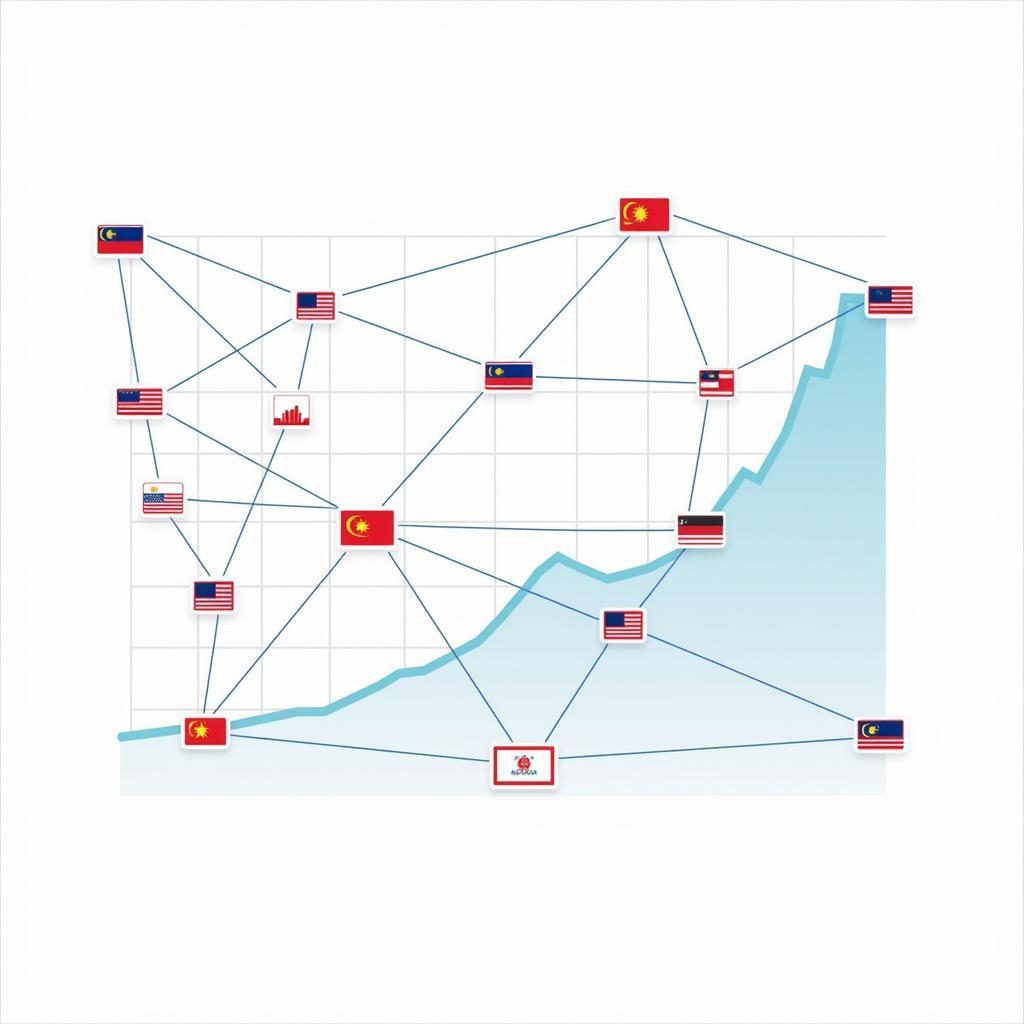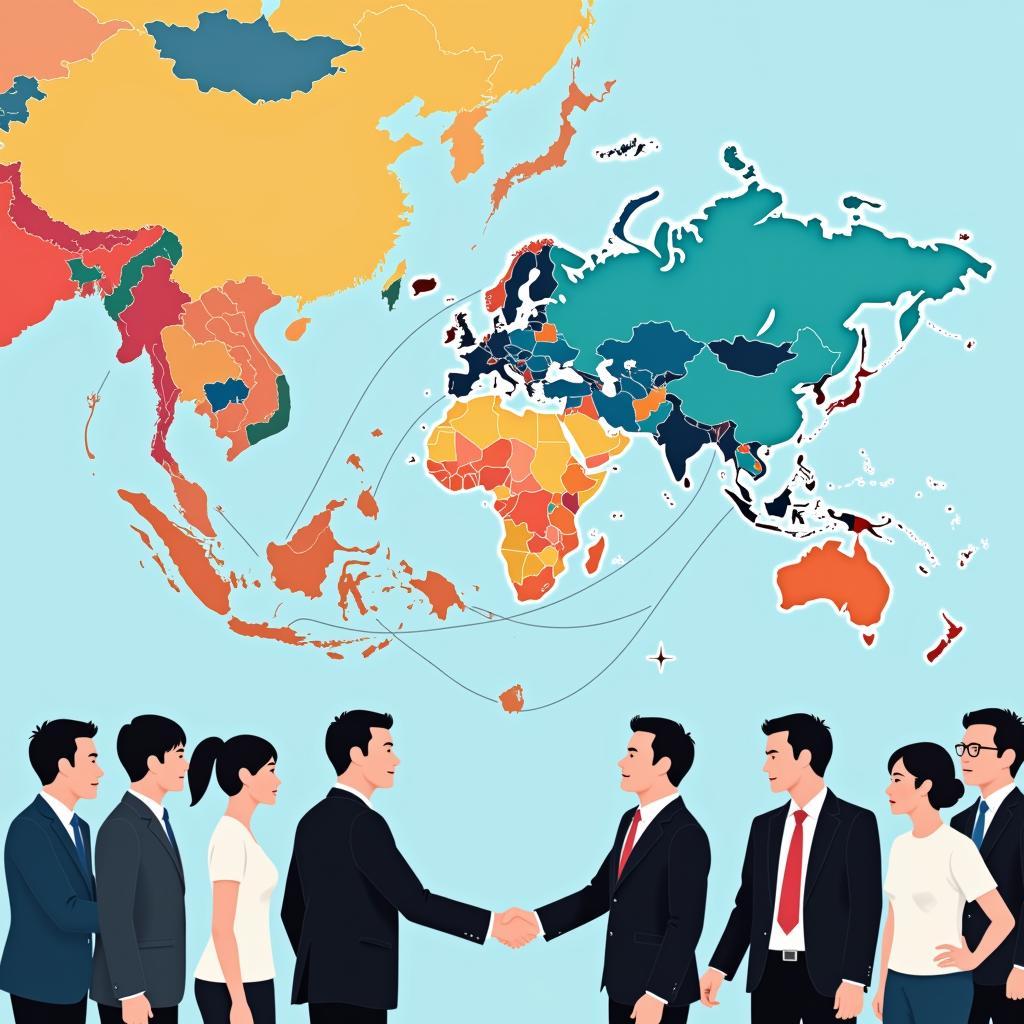According to the text, the primary goal of ASEAN is to foster cooperation and collaboration among its member states. This involves a multifaceted approach encompassing political, economic, socio-cultural, and security dimensions. The association aims to promote regional peace and stability, accelerate economic growth, social progress, and cultural development. It seeks to enhance cooperation in various fields and to strengthen a sense of regional identity.
Unpacking the Aims of ASEAN
ASEAN’s objectives are not static; they evolve with the changing geopolitical landscape and the needs of its member states. These goals, though often intertwined, can be categorized for clarity.
Political Cooperation and Security
ASEAN strives to maintain regional peace and stability through dialogue and consultation. This includes peaceful conflict resolution and adherence to the principles of non-interference. The association works to address common security challenges, including transnational crime and terrorism.
What is ASEAN’s role in conflict resolution? It provides a platform for member states to engage in dialogue and find peaceful solutions to disputes, fostering regional stability.
Economic Integration and Growth
A key goal of ASEAN is to promote economic cooperation and integration. This includes reducing trade barriers, facilitating investment, and creating a single market and production base. The aim is to stimulate economic growth and improve living standards across the region.
How does ASEAN promote economic growth? Through initiatives like the ASEAN Economic Community (AEC), which aims to establish a single market and production base, facilitating the free flow of goods, services, investment, skilled labor, and capital.
 ASEAN Economic Community Integration
ASEAN Economic Community Integration
Social Progress and Cultural Development
ASEAN emphasizes the importance of social development and cultural exchange. The association promotes cooperation in areas such as education, healthcare, and environmental protection. It also seeks to preserve and promote the rich cultural heritage of the region.
What are some examples of ASEAN’s social and cultural initiatives? These include programs promoting educational exchanges, cultural festivals, and initiatives focused on environmental sustainability and disaster management.
External Relations and Global Engagement
ASEAN engages with other countries and international organizations to promote regional interests and contribute to global governance. This involves fostering dialogue and cooperation on issues of mutual concern, such as climate change and sustainable development.
How does ASEAN engage with the world? Through dialogue partnerships with various countries and international organizations, ASEAN promotes its regional interests and collaborates on global issues.
 ASEAN Global Partnerships and Collaboration
ASEAN Global Partnerships and Collaboration
Deeper Dive into ASEAN’s Objectives
ASEAN’s goals are ambitious and require sustained effort. The organization continuously adapts to new challenges and opportunities, working to strengthen regional cooperation and integration.
Addressing Emerging Challenges
ASEAN recognizes the need to address emerging challenges such as climate change, cybersecurity, and pandemics. The organization works collaboratively to develop strategies and implement measures to mitigate these threats.
Promoting People-to-People Connectivity
ASEAN emphasizes the importance of people-to-people connectivity. This involves facilitating travel, promoting cultural exchanges, and fostering greater understanding and friendship among the peoples of ASEAN.
What does people-to-people connectivity mean for ASEAN? It refers to initiatives that promote interaction and understanding between the citizens of ASEAN member states, fostering a sense of community and shared identity.
 ASEAN Cultural Exchange Program
ASEAN Cultural Exchange Program
Conclusion: The Enduring Goal of ASEAN
According to the text, the overarching goal of ASEAN is to build a cohesive and prosperous Southeast Asian community. This involves a continuous process of cooperation, integration, and adaptation to address the evolving needs and challenges of the region. ASEAN strives to enhance the lives of its citizens and contribute to a more peaceful and prosperous world.
FAQ
- What does ASEAN stand for? Association of Southeast Asian Nations.
- How many members are there in ASEAN? 10.
- When was ASEAN established? 8 August 1967.
- What is the ASEAN Charter? The legally binding document that governs ASEAN.
- What is the ASEAN Economic Community? An initiative to create a single market and production base.
- How does ASEAN promote peace? Through dialogue, consultation, and peaceful conflict resolution.
- What are some of ASEAN’s key challenges? Addressing climate change, promoting sustainable development, and managing regional security issues.
Common Scenarios and Questions
- Scenario: A business looking to expand into Southeast Asia might ask: “What are the benefits of investing in ASEAN?”
- Scenario: A student researching regional organizations might ask: “How does ASEAN’s structure facilitate decision-making?”
- Scenario: A traveler planning a trip to Southeast Asia might ask: “What are some of the cultural similarities and differences among ASEAN countries?”
Further Exploration
Explore more about ASEAN’s economic initiatives, cultural heritage, and security cooperation on our website. We also have articles on the individual member states and their unique contributions to the ASEAN community.
For assistance, please contact us at Phone: 0369020373, Email: [email protected] or visit us at: Thôn Ngọc Liễn, Hiệp Hòa, Bắc Giang, Việt Nam. We have a 24/7 customer service team.

